9 Proven Ways to Reduce Software Development Costs
Date
Jul 09, 25
Reading Time
12 Minutes
Category
Low-Code/No-Code Development
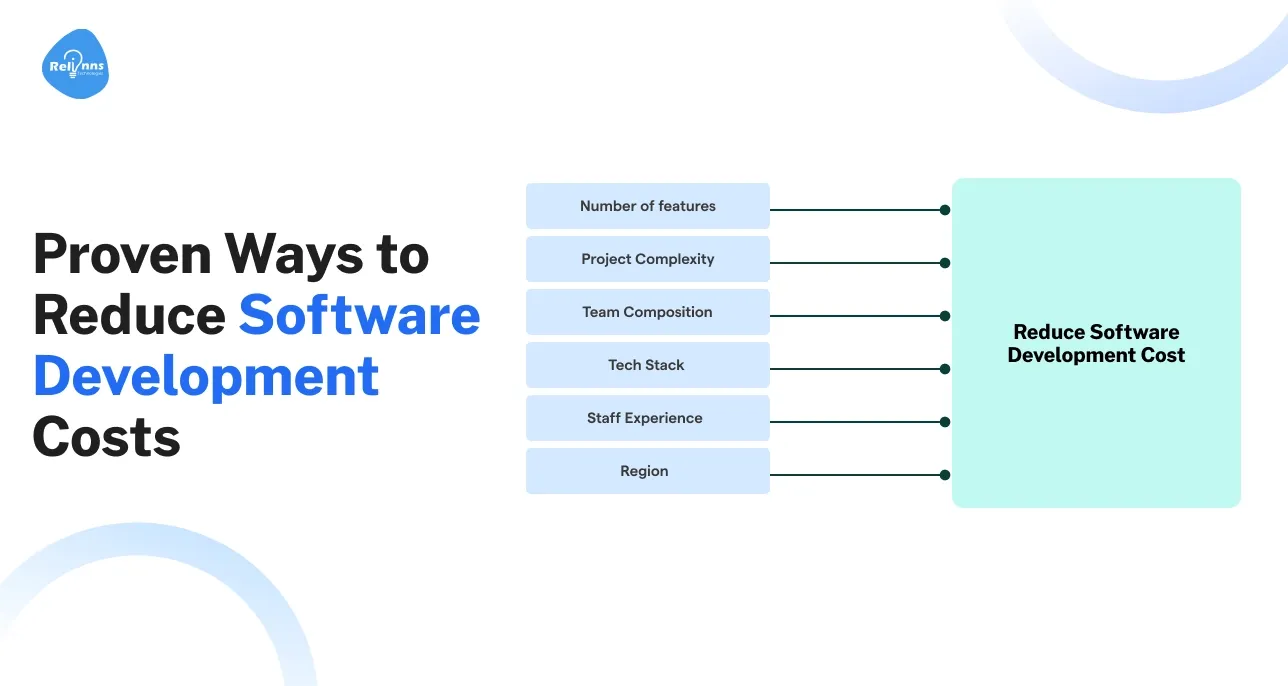
Software development costs can spiral quickly, threatening project budgets and ROI. According to a McKinsey study, large IT projects run 45% over budget and deliver 56% less value than predicted (Source: McKinsey).
With the average cost of enterprise software development ranging from $50,000 to over $500,000, it has become essential for businesses to manage these rising expenses effectively.
Over the years, many organizations have recognized that managing software development costs is not just about saving money, but also about ensuring sustainability and competitiveness in a robust market. (Source: Goodfirms)
This guide delves into nine proven strategies that can significantly reduce your software development costs without compromising the quality of the final product.
By implementing these approaches, numerous companies have successfully achieved cost reductions of 15-30% while maintaining, or even improving, the quality of their software products. This helps them not only to remain competitive by achieving a lower development cost but also to invest in future innovations and enhancements.
How to Plan Your Software Development Costs for Maximum ROI
Before diving into development, comprehensive planning establishes a solid foundation that leads to efficient execution and a lower development cost. According to the Project Management Institute PMI, poor planning accounts for nearly 39% of project failures (Source: PMI).
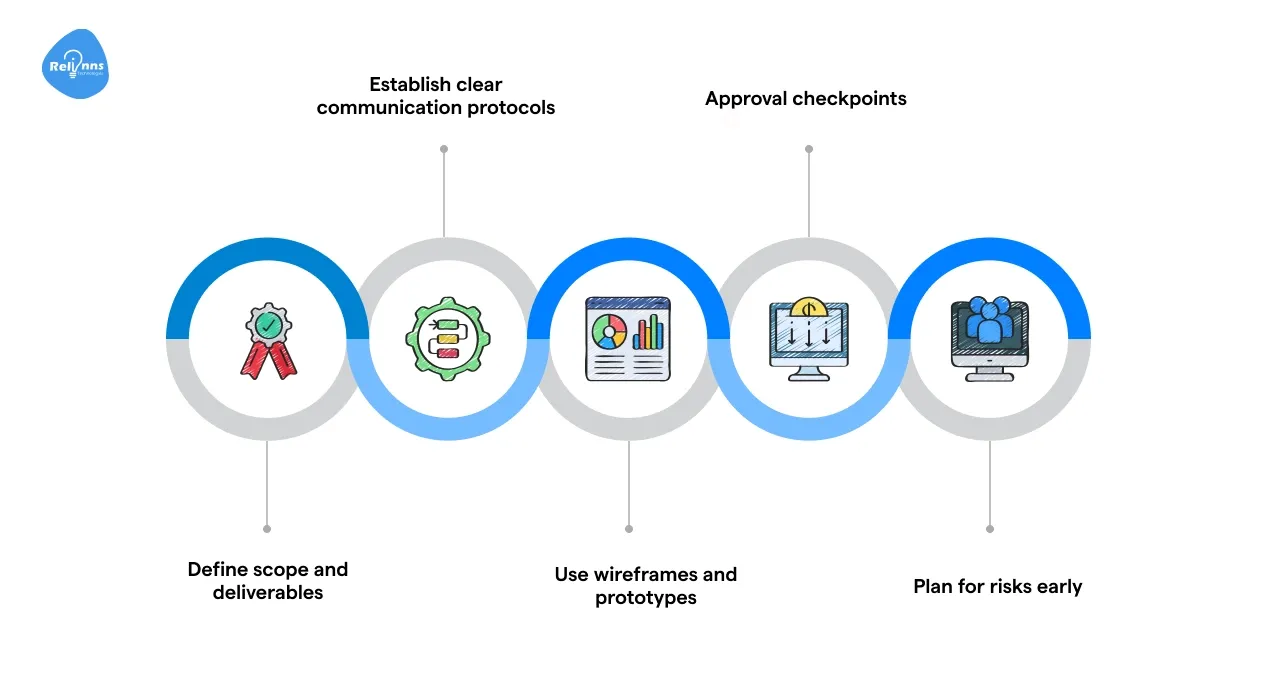
When requirements change mid-development, costs can increase by 30-50% compared to addressing those exact requirements during the planning phase.
To plan effectively, we must look at the following.
- Define scope and deliverables: Clearly outline features, goals, timelines, and required resources before development begins.
- Use wireframes and prototypes: Visual models help align expectations and reduce costly design miscommunications later.
- Plan for risks early: Identify technical or timeline risks and create mitigation plans to avoid delays.
- Establish clear communication protocols: Implement regular check-ins, feedback loops, and decision-making workflows to ensure smooth collaboration.
- Approval checkpoints: Define client or stakeholder approval stages to prevent rework and scope creep.
Investing time in planning pays dividends—projects with adequate planning are 50% more likely to be completed on time and with lower software development cost.
1. Define Clear Requirements to Avoid Costly Rework
Vague or incomplete requirements are one of the biggest drivers of inflated software development costs.
When expectations are unclear, teams waste time on misaligned features, rework, and mid-project changes, which drive up development time and reduce the chances of achieving a lower development cost.
According to the Project Management Institute (PMI), poor requirements gathering is a primary cause of failure in 71% of software projects. Additionally, CIO.com notes that clear and validated documentation can reduce development costs by up to 40%.
Establishing well-defined requirements ensures that everyone is aligned, reduces risk, prevents scope creep, and helps reduce development costs.
A disciplined approach not only improves quality but also helps maintain lower software development costs.
- Write clear documentation: Use simple, unambiguous language to describe features, functions, and expected behavior.
- Create user stories: Add detailed acceptance criteria to guide developers and ensure functionality meets user needs.
- Prioritize with MoSCoW: Separate must-haves from nice-to-haves to avoid overspending on non-essential features.
- Validate with stakeholders: Confirm all requirements are accurate and approved before starting any development work.
- Freeze core features early: Prevent scope creep by locking critical functionality and avoiding constant changes to requirements.
2. Use Low-Code Platforms Like Joget
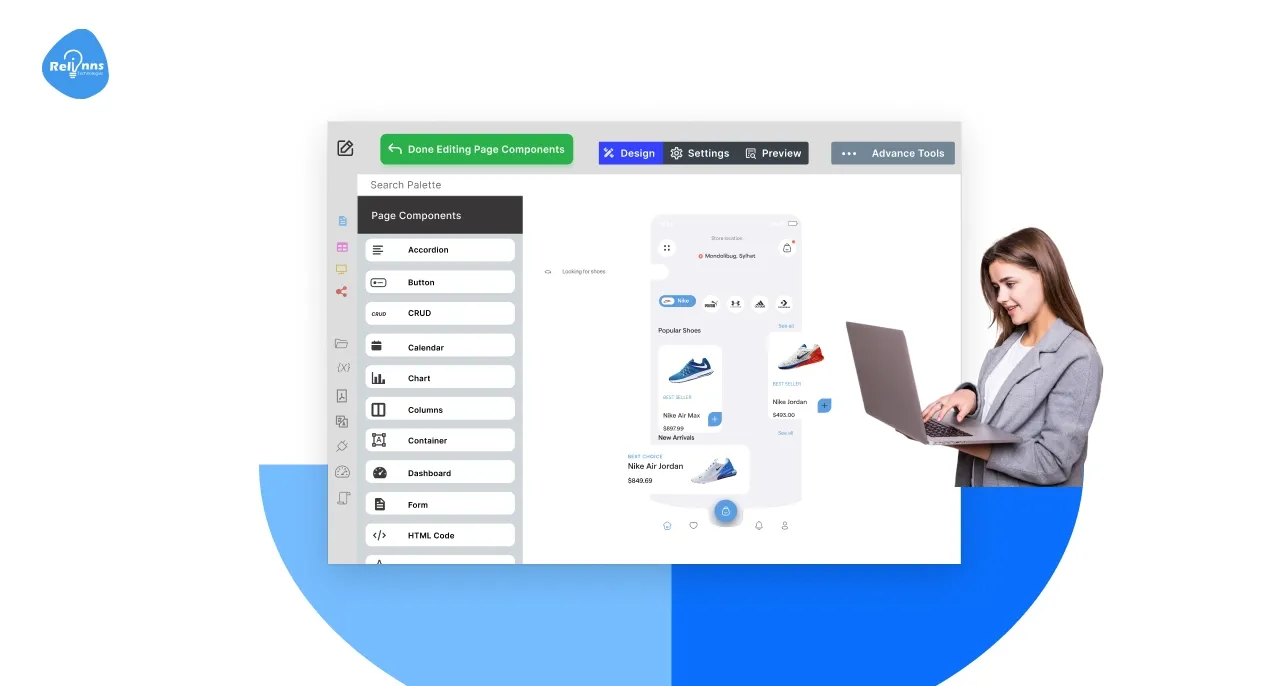
Low-code development platforms, such as Joget, offer powerful ways to reduce software costs by minimizing traditional coding work.
These platforms let developers and non-developers build applications using drag-and-drop interfaces, automated workflows, and pre-built components to achieve lower development costs.
This reduces the need for large engineering teams and helps reduce development costs while lowering the technical barrier to entry. Instead of hiring niche specialists, businesses can reallocate internal resources to maintain lower software development costs.
Low-code platforms also support rapid prototyping, testing, and deployment, enabling teams to react more quickly to feedback. As a result, companies can launch MVPs more rapidly and iterate continuously, significantly reducing development time and cost without sacrificing flexibility or quality.
- Drag-and-drop design: Speeds development by removing the need to write repetitive code manually.
- Fewer specialists needed: Reduce reliance on backend, frontend, and full-stack developers for basic components.
- Built-in automation: Streamline processes with ready-to-use logic and integration tools.
- Easy maintenance: Visual models make managing, troubleshooting, and updating apps easier.
- Faster testing cycles: Change, test, and redeploy faster with fewer resource dependencies.
3. Choose the Right Technology
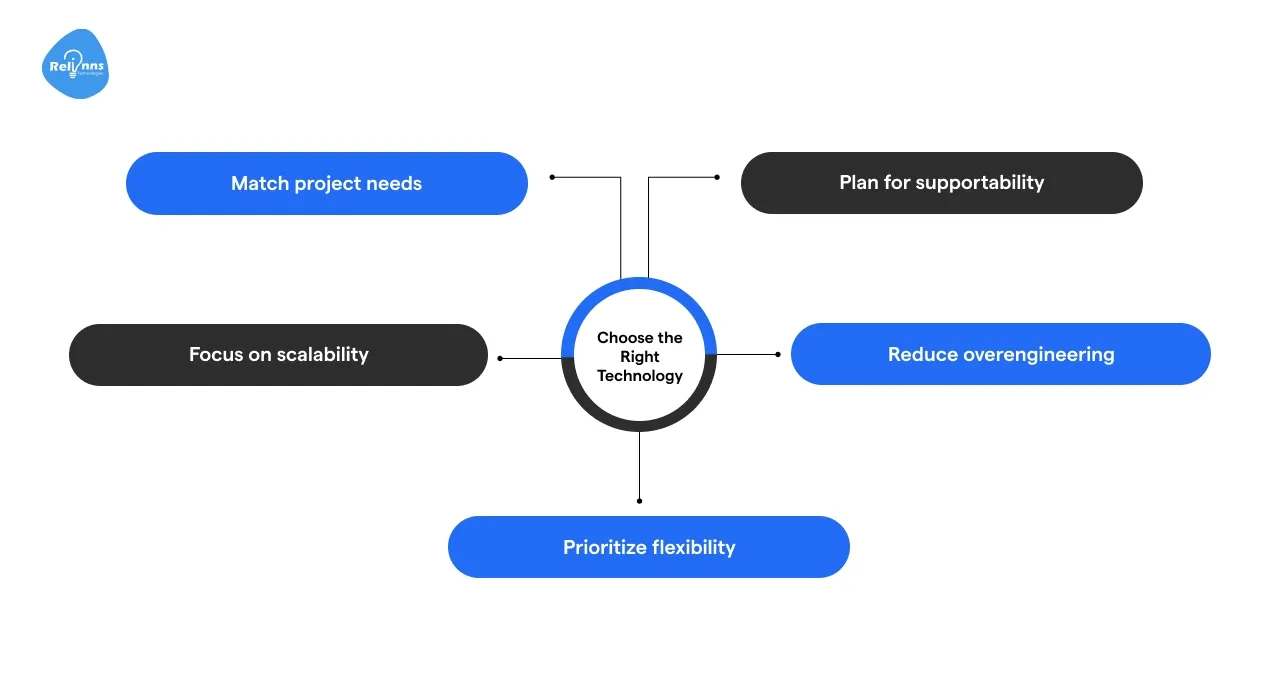
The technology stack you choose can significantly impact the lower development cost of your project.
It affects development time, scalability, maintenance burden, and even the software development cost.
A Harvard Business School analysis reports that globally used open-source software delivers approximately $8.8 trillion in economic value, indicating that companies would need to spend significantly more on proprietary alternatives.
A report by the Standish Group highlighted that open-source software adoption has led to approximately $60 billion in yearly savings compared to proprietary alternatives (Source: Open Source Initiative, citing Standish Group).
Additionally, Wikipedia summarizes that free software models result in a $60 billion annual reduction in proprietary software revenue, supporting the same claim (Source: Wikipedia).
- Match project needs by selecting technologies that align with app complexity and the development team's expertise.
- Plan for supportability: Choose tools with long-term vendor or community support to reduce future costs.
- Reduce overengineering: Avoid unnecessary complexity by sticking to battle-tested, proven technologies.
- Focus on scalability: Adopt tools that scale with user demand without overburdening early stages.
- Prioritize flexibility: Opt for frameworks that can evolve with your business and user requirements.
4. Use Agile Development

Agile development is a proven method for delivering software more quickly and cost-effectively. Instead of building everything up front like in waterfall models, Agile uses short iterations (“sprints”) with regular feedback loops to ensure lower software development cost.
According to a study cited by AgileSherpas, companies that use Agile methods complete projects 28% faster and are 71% more successful than those that use traditional waterfall models. Additionally, IBM found that Agile projects experience 50% fewer defects, thanks to iterative development and continuous feedback loops.
By catching issues early and iterating quickly, Agile helps reduce development costs and ensures teams stay aligned with user needs and changing market conditions..
- Sprint-based work: Break the project into 2–4 week cycles with clear, testable outputs.
- Daily stand-ups: Identify blockers and bottlenecks early to avoid costly slowdowns.
- Retrospectives: Teams reflect on and improve their performance with each iteration to enhance quality and efficiency.
- Prioritized backlog: Adjust priorities as market needs evolve without requiring system rebuilds.
- Collaborative delivery: Align cross-functional teams on shared goals, boosting innovation and accountability.
5. Reuse Code and Components
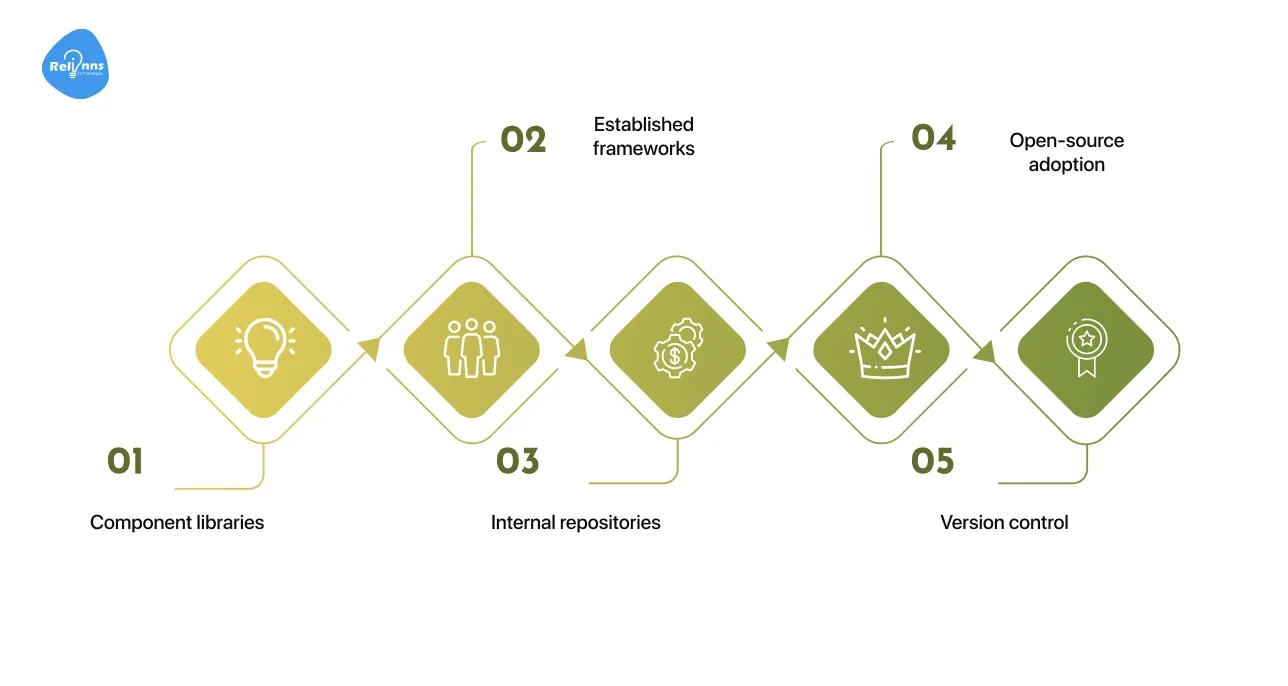
Code reuse significantly reduces development and maintenance efforts while improving software quality and contributing to lower development costs.
A 2018 Carnegie Mellon Software Engineering Institute report found that achieving 70% code reuse led to a 26.1% reduction in software development cost, saving approximately $2.39 billion on a 27 MSLOC system.
Additionally, mature reuse practices have been linked to 25–30% higher developer productivity, as detailed in the Wikipedia entry on code reuse.
- Component libraries: Utilize standardized UI and logic modules to minimize repetitive coding and streamline development.
- Established frameworks: Rely on tried-and-true libraries for standard functions and stability.
- Internal repositories: Maintain shared modules (e.g., authentication, APIs) for use across projects.
- Open-source adoption: Leverage community-maintained packages for non-core functionality and faster delivery.
- Version control: Utilize reliable versioning to manage updates and ensure the compatibility of shared components.
6. Automate Testing and Deployment
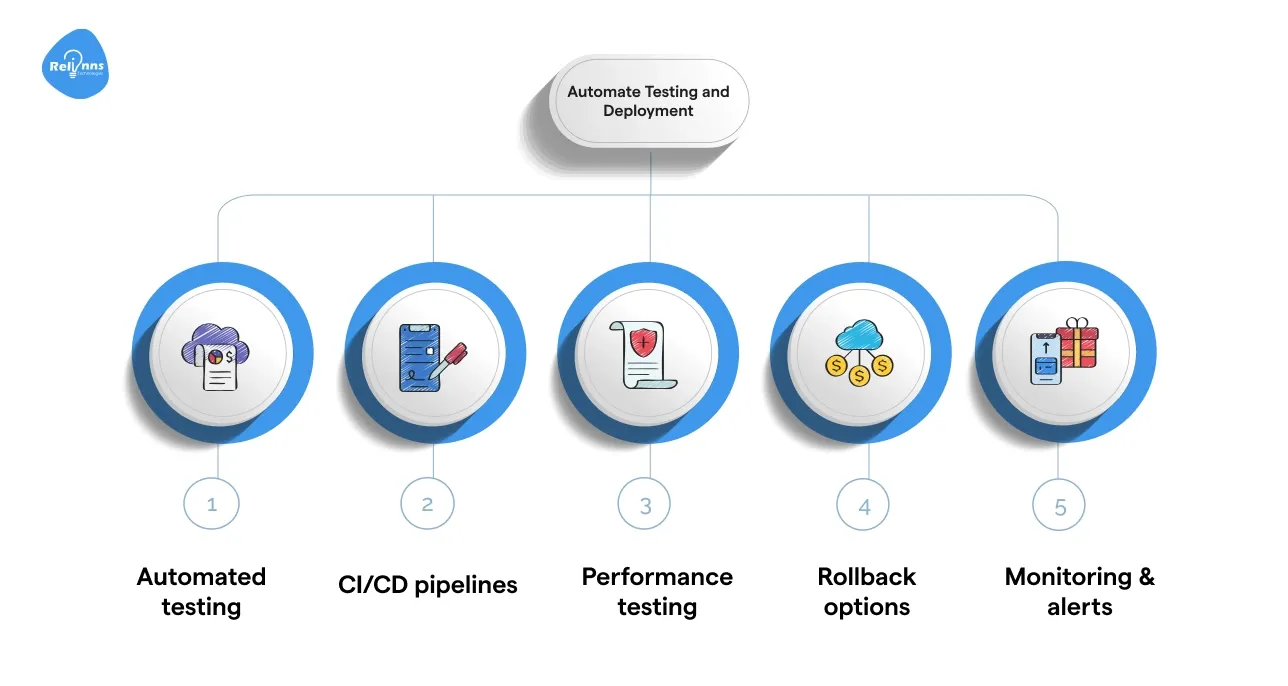
Manual QA and deployment processes are slow, costly, and increase software development costs due to human error.
Automating these stages—test execution, build pipelines, and releases—helps teams catch issues earlier, reduce rework, and lower development costs.
According to Capgemini’s World Quality Report, full test automation can cut QA costs by up to 40%.
The DORA State of DevOps Report finds organizations using CI/CD pipelines spend 21% less time on unplanned work and rework, resulting in faster, more stable releases (Source: DORA)
- Automated testing: Run unit, integration, and regression tests continuously to catch errors early.
- CI/CD pipelines: Automate builds, tests, and deployments to accelerate delivery and reduce manual errors.
- Performance testing: Detect bottlenecks and stability issues before production release to ensure reliability.
- Rollback options: Instantly revert broken deployments using automated rollback mechanisms to minimize downtime.
- Monitoring & alerts: Trigger alerts on performance degradation or failures for proactive incident response.
7. Outsource Smartly to Optimize Costs
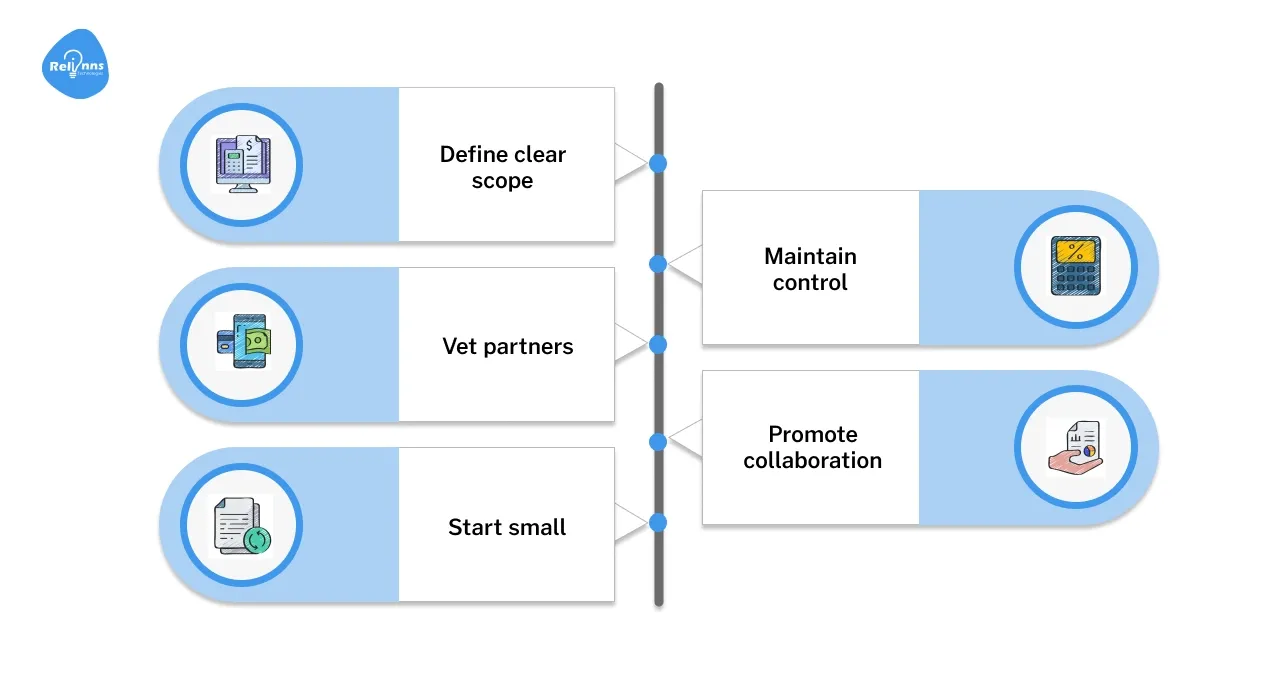
Outsourcing non-core development can offer substantial cost savings—20–30% lower operational expenses, according to Deloitte’s 2023 Global Outsourcing Survey.
However, poor vendor management and unclear deliverables can still undermine efforts to reduce development costs, leading to cost overruns.
Companies that don’t properly govern their outsourcing relationships may see costs increase by up to 65%, as reported by Forrester analysis (Source: CIO.com summary).
Businesses can achieve lower development costs and optimize quality by strategically outsourcing standardized tasks while maintaining their core architecture in-house.
This approach involves defining clear deliverables, selecting reliable partners, and fostering continuous collaboration to reduce software development cost.
- Define clear scope: Set concrete deliverables, timelines, and review stages to avoid miscommunication.
- Vet partners: Choose vendors with proven domain expertise and strong client testimonials.
- Start small: Conduct pilot projects to assess the quality of collaboration and deliverable standards.
- Maintain control: Keep core architecture and product direction in-house for strategic alignment and consistency.
- Promote collaboration by using shared dashboards and regular check-ins to keep teams aligned and synced.
8. Build an MVP First
Launching a Minimum Viable Product (MVP) is a powerful tactic to reduce development costs while validating user demand early.
Instead of building a full-featured product upfront, an MVP prioritizes core functionality, enabling real-world testing and ensuring lower development cost before hefty investments.
According to SDH Global, MVPs can lower development costs by up to 60% compared to traditional approaches.
Additionally, approximately 72% of startups use MVPs to refine products with honest feedback, helping reduce development costs and avoid costly missteps.
- Solve one problem: Focus the MVP on a single, clearly validated pain point.
- Limit features: Include only essential elements to enable quick delivery and feedback.
- Define KPIs: Identify core metrics that guide development priorities.
- Gather feedback: Use real-world user insights to shape future iterations.
- Avoid overbuilding: Confirm value before expanding features or architecture.
9. Plan Development Costs Clearly
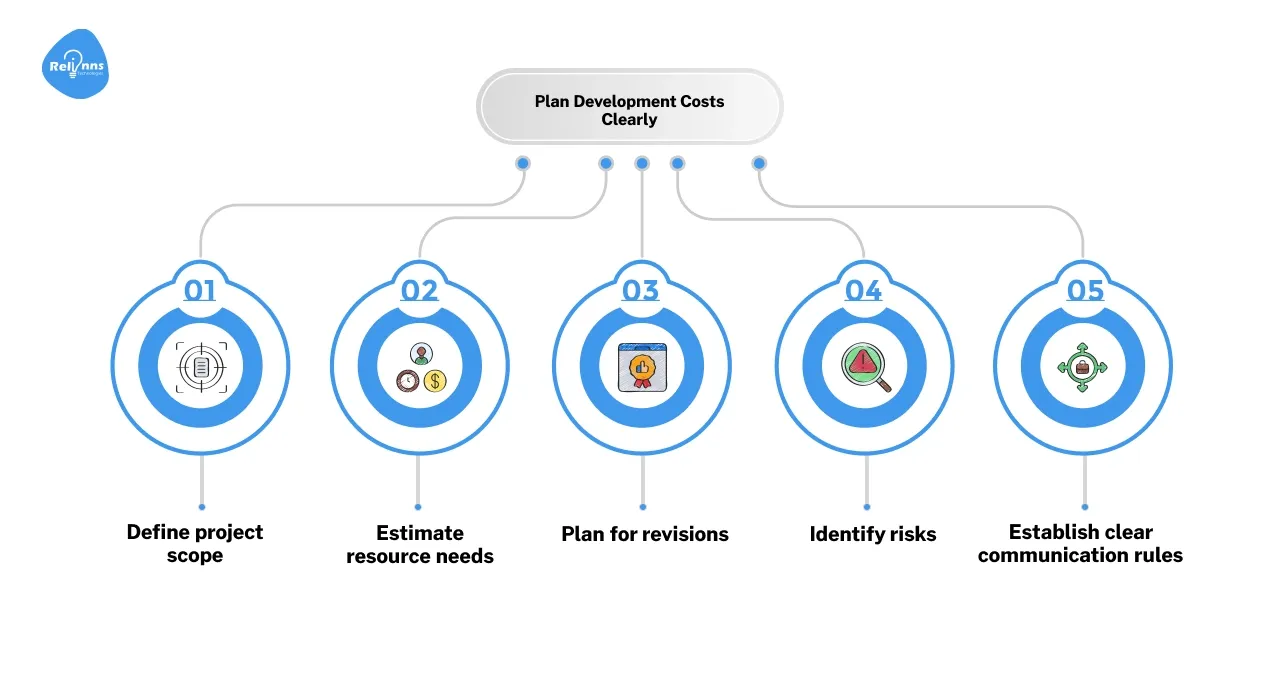
Poor cost planning often leads to scope creep, delays, and budget overruns. Establishing a comprehensive cost and scope plan increases project success and supports lower development costs through better financial discipline.
Studies show that nearly 50% of projects experience scope creep, and only 57% remain within budget. Clear scoping, resource estimation, risk buffers, and structured approvals help teams avoid uncontrolled growth, maintain timelines, and consistently deliver projects under budget.
- Define project scope: Document features, constraints, milestones, and business goals.
- Estimate resource needs: Budget for developers, designers, QA personnel, and tools.
- Plan for revisions: Allocate sufficient time and resources to implement changes and address bugs.
- Identify risks: Model potential technical or timeline issues and create mitigation strategies.
- Establish clear communication rules: Define structured feedback and approval processes to minimize delays and ensure timely progress.
Suggested Reading: Top Joget Plugins Every Developer Should Know
Conclusion: Optimize Software Development Costs Without Compromising Quality
Controlling software development costs doesn't mean cutting corners—it means working smarter to ensure lower development costs.
By following these nine proven strategies, from detailed planning and agile execution to adopting low-code platforms like Joget with different joget plugins help businesses significantly reduce costs while improving delivery speed, collaboration, and product quality.
Cost optimization isn’t a one-off checklist—it’s a continuous, evolving commitment. Start by evaluating your current pain points, adopt the practices that align with your workflows, and scale your approach as needed.
Over time, this methodology transforms software development into a sustainable advantage, not a financial liability.
By embracing best practices and tools, your organization can develop robust, scalable applications with lower software development costs. This leaves more room for innovation, investment in growth, and improved customer service through lower development costs.
Why Choose Relinns for Reducing Software Development Costs?
Relinns is more than just a development partner—we’re your cost-efficiency enabler. By combining Joget-powered low-code platforms, scalable outsourcing models, and rapid MVP delivery, we help businesses launch faster, cheaper, and smarter.
- Low-Code & No-Code Expertise: Using platforms like Joget, we build powerful business applications in a fraction of the time, without compromising flexibility or performance.
- Flexible Outsourcing Models: Hire developers hourly, part-time, or full-time—at rates up to 70% lower than in your home country. Reduce overhead, not output.
- MVP-First Development: We specialize in minimum viable products that validate your ideas fast. Test with real users before scaling—cutting risk and rework.
- Agile-Centric Process: Our sprint-based approach reduces scope creep and enhances collaboration, enabling you to lower software development costs with every iteration.
- White-Label Solutions: Need it fast? Choose from ready-made white-label apps or fully brandable product templates—ideal for SaaS, agencies, and resellers.
- Resource & Product White-Labeling: We provide both developer talent and full-stack product white-labeling, allowing you to expand your service offerings without incurring in-house investment.
Ready to cut costs and boost development efficiency? Talk to Relinns today—your custom solution starts here.
Frequently Asked Questions (FAQs)
What is the single most effective way to reduce software development costs?
Precise requirements definition is the most impactful way to reduce software development costs. By outlining features, user flows, and acceptance criteria early, businesses avoid costly scope creep and late-stage rework, helping reduce development costs and ensure developers build exactly what's needed.
How much can Agile development save compared to traditional waterfall methods?
Agile development typically reduces software development costs by 20–30% compared to traditional waterfall development.
Agile enables early feedback, adaptive planning, and faster iterations, which help reduce development costs by fixing problems early. This methodology also improves team productivity and product-market fit.
Is outsourcing always cheaper than in-house development?
Outsourcing software development can lower software development costs, but only when managed strategically.
Outsourcing can lead to quality issues, delays, or hidden expenses if there is no clear communication, scope alignment, or strong vendor oversight.
How do low-code platforms like Joget reduce development costs?
Low-code platforms, such as Joget, help reduce development costs by minimizing the need for in-depth coding expertise.
With drag-and-drop tools and reusable components, businesses can build faster, reduce reliance on large teams, and lower software development costs.
What’s the ROI on automated testing?
Automated testing offers a 3x to 5x return on investment by reducing manual QA costs and catching bugs earlier.
It’s especially valuable for regression testing, where repeated test cycles are needed. Automation ensures reliability, reduces human error, and accelerates deployment timelines.
How can startups with limited budgets implement these cost-saving strategies?
Startups should begin by defining a clear MVP, selecting scalable technologies, and using low-code or no-code tools.
These strategies help validate product-market fit early, minimize development waste, and reduce development costs by delivering prototypes without large teams.
When is it NOT appropriate to cut development costs?
Avoid cutting software development costs in critical areas, such as security, user data privacy, and core functionality, as these are essential components that cannot be compromised.
Undervaluing these aspects can lead to breaches, poor performance, or customer dissatisfaction, ultimately making it harder to reduce development costs in the long run.



